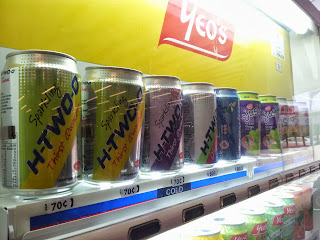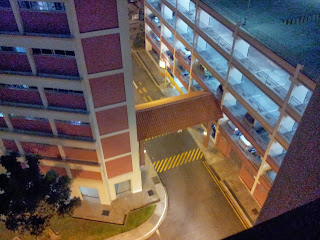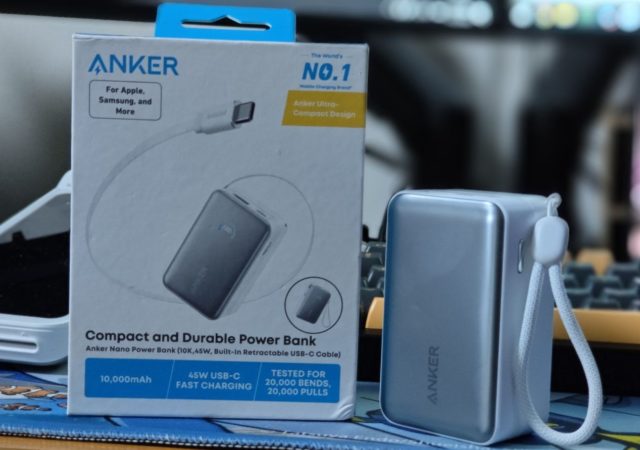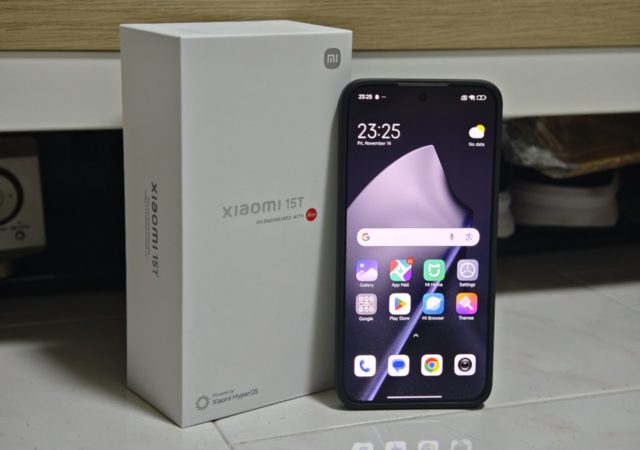Introduction
We’ve seen many manufacturers trying their best at coming out with the best tablet PCs for the market. Samsung has got their new high resolution display tablets in all sorts of sizes, Lenovo has got a huge table PC for a totally different scenario use and of course, we should not forget about Microsoft’s Surface which has a nice little kickstand built in to hold it in the right viewing angle. Despite all these great innovation in tablet PCs, there hasn’t been a good and affordable “no-frills” tablet PC quite available in the market. As an average user who just uses a tablet PC to play some games, check email and browse the internet, I just need a very simple tablet with adequate specifications for my everyday use.
ASUS has probably saw the gap in the market and decided to push these tablets into the market. A few months ago, they introduced the new ASUS MeMO Pad HD 7 at COMPUTEX TAIPEI which gained attention of every user due to its attractive price point and decent specifications for use as an everyday tablet PC. From a first impression, MeMO Pad HD 7 seems to be the best mainstream Android tablet PC with all its different features done right. Moreover, buyers can even choose from an array of colours for their choice of MeMo Pad HD 7 which shows the dedication of ASUS in making this the tablet device for everyone.
Today, we are going to take a closer look at the MeMO Pad HD 7 in terms of its design, hardware specifications and performance, camera performance as well as some unique features that ASUS has placed within this tablet that increases consumer experience satisfaction greatly.
Specifications
|
Feature
|
Specifications
|
|
Operating
System |
Android 4.2 Jelly Bean
|
|
Display
|
7” LED Backlight WXGA (1280 x 800) Screen
IPS Panel |
|
CPU
|
MediaTek MTK8125 Quad Core 1.2GHz
|
|
Memory
|
1GB
|
|
Storage
|
16GB internal, 16GB One Year ASUS Web Storage
|
|
Wireless Connectivity
|
WLAN 802.11a/b/g/n , Bluetooth V4.0
|
|
Camera
|
1.2MP Front Camera
5.0MP Rear Camera |
|
Audio
|
Stereo Speakers with ASUS SonicMaster Technology
|
|
Interface
|
MicroUSB
Audio Jack (Mic/Headphone) MicroSD slot (up to 32GB expansion) |
|
Sensors
|
G-Sensor
E-Compass Hall Sensor |
|
Application
|
Asus Launcher
MyLibrary
File Manager
Kindle
Zinio
SuperNote Lite
App Backup
App Locke
|
|
Battery
|
10 hours
15Wh Li-polymer Battery |
|
GPS
|
Supported
|
|
Colors
|
White/Blue/Pink/Green/Gray
|
|
Dimensions
|
196.8 x 120.6 x 10.8 mm (WxDxH)
|
|
Weight
|
302g
|
Special things that gives the best user experience
A good user experience is determined by the personal acceptance of a device based on the different senses of our body. Since we can’t taste or smell a physical piece or technology, it is thus defined by the combination of visual, hearing and touch experiences on the device. That is why ASUS has redefined customer satisfaction by bringing these essences to their devices in hopes to attain what they call as “Customer Happiness 2.0”.
Visual Experience
ASUS has integrated both hardware and software features within their tablet to ensure the ultimate visual experience on the MeMO Pad HD 7.
At the hardware side, the tablet is built with a IPS Panel that supports a maximum resolution of 1280 x 800. It could be misleading with the use of the “HD” for its model number as HD usually refers to a resolution of 1920 x 1080, but a 1280 x 800 resolution is adequate for a tablet of its size. This results in a PPI of 215.63 which in my opinion is the bare minimum requirement for any device. Usually, lower PPI display will result in users realising individual pixels on the screen, creating a very bad user experience as images are of “low resolution”. Anything above 200 should be good enough to reproduce overall better user experience.
It is a must for all tablets to use an IPS panel. I’m glad that despite the affordable price tag of MeMO Pad HD 7, ASUS did not cut corners when adopting the right display panel. I was able to view my videos on the MeMO Pad HD 7 at various angles and lying in different positions. Technically, the display is able to give one a 170 degree wide viewing angle.
Over at the software side, ASUS’s own ASUS Splendid app found preinstalled on the MeMO Pad HD 7 allows me to tune the colour scheme of the screen to get the perfect colour for my media. I simply applied the recommended “Vivid Mode” which gave an overall brighter and more vibrant colour tone on the display.
 |
| ASUS Splendid App |
Audio Experience – ASUS SonicMaster Audio Technology
ASUS has claimed that they used stereo speakers on the MeMO Pad HD 7. After putting the tablet to the test and playing different genres of songs, I was captivated by the sounds that it was able to produce. In fact, I thought that the speakers found on the tablet was in fact much better than many laptops out in the market. The audio coming out from the speakers were loud enough to reproduce decent bass for a speaker setup without a subwoofer. Sounds were rich and accurately reproduced. This is probably where the tablet shines when compared to other competing products in the same market segment.
| Speaker Grills at the back |
Additionally, in order to meet different demands of users for audio quality in different audio types, ASUS has even preinstalled the “Audio Wizard” application. The application tweaks the audio output to suit different audio types and user scenarios.
 |
| ASUS Audio Wizard App |
We took a deeper look into the device by taking off the back cover of the tablet. It revealed the two speaker drivers located at the bottom of the tablet device, working as how they should be. The speakers were constructed with a metallic medium with large resonance chamber design which promises enhanced sound power, fidelity, and balance.
| Stereo speakers made from Metal |
Touch Experience / Feel of the overall device
To meet the demands of gamers on the tablet, ASUS has used a touch panel which supports 10-points multi-touch support, enabling different games to be played. For example, one is not limited to the number of simultaneous chops they can execute in Fruit Ninja. Users can also play their virtual piano freely on the device without the worry of hardware touch limitations.
 |
| AnTuTu multi-touch test : 10 point touch |
Other than that, ASUS MeMO Pad HD 7 stands out in terms of weight and battery life. The tablet is rated to have a battery life of 10 hours per charge. This means that we are able to get full day usage on the device without any worries that it will run out of juice. Despite its long battery life, weight is not compromised. ASUS MeMO Pad HD 7 weighs a mere 302 grams, making it a truly portable device.
 |
| AnTuTu Battery Test : 883 Points |
 |
| AnTuTu Battery Test Comparison |
| Huge battery pack found taking up most of the space internally |
We thought that the size and dimensions of the tablet is just right. ASUS has designed the back cover of the tablet to be curved to allow users to have a better grip on the device. Because the device is only 10.8mm thin and is light, I did not feel any strain on my wrist and hand when holding on to the tablet. ASUS has thought a lot about the ergonomics of the device, and I’m happy to say that they have done it right.
Camera Tests
 |
| ASUS MeMO Pad HD 7 |
 |
| Samsung Galaxy S II |
 |
| ASUS MeMO Pad HD 7 |
 |
| Samsung Galaxy S II |
 |
| ASUS MeMO Pad HD 7 |
 |
| Samsung Galaxy S II |
Sadly, ASUS has used a substandard camera sensor and lens part for the MeMO Pad HD 7. To put it bluntly, the camera test shots taken from MeMO Pad HD 7 cannot be compared to a 2 year odd Samsung Galaxy S II. Images taken seemed washed out and of low quality even though it’s a 5 megapixel sensor. Colours weren’t as vibrant as compared to the S II.
 |
| ASUS MeMO Pad HD 7 |
 |
| Samsung Galaxy S II |
 |
| ASUS MeMO Pad HD 7 |
 |
| Samsung Galaxy S II |
The tables were turned when photos were taken in low light scenarios. As seen in the last 2 test samples from both phones, ASUS MeMO Pad HD 7 produced consistent brighter images as compared to S II. More details can be seen from the images even when light was lacking. The differences were more significant in the multi storey car park night shot. I was quite amazed by the image taken from the MeMO Pad HD 7 when I put it side by side to the S II. The differences were so huge. Colours look so much more natural on from the MeMO Pad HD 7 in night shots.
Performance and Benchmarks
We put ASUS MeMO Pad HD 7 to 2 basic benchmark tests to test its performance in 3D games and overall usage. In 3DMark for Android, it scored an effective score of 3102, putting itself in the usual mainstream performance segment. It has similar performance scores as compared to a Samsung Galaxy Tab 3 8.0, which I must say is decent for simple games that are available on the Google Play Store.
On AnTuTu benchmark, MeMO Pad HD falls between a HTC One X and a Samsung Galaxy S II.
Conclusion
Pricing and Availability
FOLLOW us on our Twitter
LIKE us on our FaceBook
SUBSCRIBE to us on our YouTube Channel!









